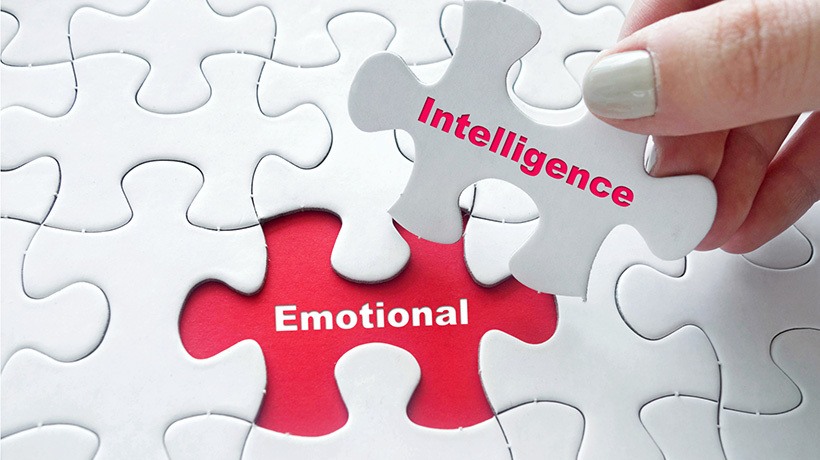Develop Your Leadership Skills Through Inquiry
Leadership skills are divided into hard skills and soft skills. Hard skills are workplace-specific practical skills, such as proficiency in a trade, computer program, or knowledge about specific business practices. These skills are learned during education and career. Soft skills are a bit hazier and generally considered to be more difficult to teach. Soft skills are personal and interpersonal skills. They talk about how well a person can relate to others and manage/lead a team.
This example of a soft-skills' list comes from an eLearning article by N. Andriotis:
- Communication
- Teamwork
- Decision-making
- Problem-solving
- Empowerment
- Empathy
The Importance Behind How We Cope With Stress
You’ll need all of these skills at some point or other for you to influence your work environment in effective and positive ways. Which skill is the most influential in any one situation, of course, depends on your situation! When your mind is clear, it will become obvious which skill is needed.
And that is exactly the crux and the main difficulty in living—and showcasing—inspiring leadership qualities at your workplace. When your mind is clear you, will have no difficulties; you will know what to do without fail. And mostly, our mind is not clear. On a regular day, the human mind is cluttered with thoughts, beliefs, and expectations.
As we arrive at work, we already have a schedule for the day in our minds. We have been here before (yesterday, probably), and so we think we know how this day will develop. We have deadlines to meet, communications to fulfill, tasks to complete. If you are working in a successful business, it is safe to assume that your day will be full, or expected to be full, before you have even started it. Living with this mindset entails a certain amount of tension. If you have achieved any leadership position you likely thrive on some tension. Fulfilling a certain number of challenging tasks on any day is part of what satisfies you about your work.
Working within this tension is a little bit like walking on a tight rope—it is exhilarating as long as all goes well. When expectations are no longer met, the tension starts to be experienced as stress. Stress arises when we no longer agree with what is happening. We "argue with reality," as Byron Katie so aptly describes it. When we would prefer a situation to be different from how it is presenting itself in any given moment, we experience stress. This stress at work can have any number of perceived causes. Someone you relied on doesn’t do their job. A computer breaks down. Your appointment calendar dropped an appointment. A client complains. Someone is sick, or not showing up. Fill in your own blank.
How well we cope on any given day depends on our general health status, on the number of stressful situations we encounter this day, week, or month, and the strength of our support team. All of these have an influence on our mental state. What we often don’t take into account is that, to begin with, our mental state influenced all of those.
We are often not aware of the influence we have had on the situation before the situational feedback that we perceive. We are focused on the world out there, in front of us. We forget to tend to the world inside of us. It is in the internal world that emotional intelligence, self-awareness, empathy, decision-making skills and listening skills can develop and mature. These skills are needed for team interactions and to empower our teammates. If we don’t know ourselves, if we don’t know our reactions, motivations, trigger points, core values, and belief systems, we are not grounded.
We tend to understand being grounded as a connection to the earth, but really, it is a connection to ourselves, to our internal environment. When we are grounded in who we are, know ourselves and are in contact with ourselves throughout our day, only then we can act with true power. Our mind is clear, and we know what to do.
The reason why meditation has become such a valued tool is exactly this. In meditation we learn to become more self-aware, we start to be in touch with our internal environment. It is not easy to transfer the calm of meditation into the workplace environment. If we don't succeed we can end up reproaching ourselves. We are discouraged because we don’t progress fast enough. In the meantime, stress sticks around.
How We Use Inquiry-Based Learning
When we add inquiry-based learning to our toolkit to cope with stress, we can calm our minds and, at the same time, transform workplace challenges that are specific for ourselves and for this time of our lives. Inquiry is a tailor-made process for you to develop the leadership soft skills needed for your work situation.
With inquiry we question our thinking about a situation. As we go through the process, we learn about our emotions and reactions, we understand how we have been responsible for the presenting situation, and we become very clear on how to move forward. We experience being in our own power. The process complements meditation and any other self-development tool you already use. Inquiry, also known as The Work of Byron Katie, consists of 4 questions and turnarounds. It is nothing without your own answers to the questions and fits the thinking process like a glove.
An example of how to use inquiry would be to question a situation of verbal disagreement (see below). Most of us are somewhat identified with our opinions—understandably so because, obviously, we think we are right. As a result of that, it can be difficult to deeply listen to someone who has a different opinion. Our mind already formulates what we want to say in response, tells us how this other person is wrong, and how they can be convinced. Underlying these motivations there might be time constraints, personal likes or dislikes, or insecurities. So if our colleague doesn’t agree with us and raises their voice, we might feel attacked.
To follow this inquiry, I invite you to find a situation at your work when you felt attacked in this way and answer the questions based on that situation.
Example Workplace Situation: “He/She/They Attacked Me.”
Question 1 Of Inquiry: Is It True?
The answer to Q1 is Yes or No only. And notice how the mind would like to justify, argue, and be right.
My answer is YES (I remember the physical experience of being attacked. I felt attacked, yes.)
Question 2: Can I Absolutely Know This Is True?
The same question with a slightly different emphasis—Can I absolutely know this? Again, the answer would be Yes or No only.
My answer would be No. Not absolutely true.
Question 3: How Do I React, What Happens When I Believe This Thought: "They Attacked Me"?
In this question, we explore our internal environment and watch our reactions and body language. We learn about the consequences of belief.
I might recoil. I feel first fearful, then angry. This happens fast. Going forward from there I keep a throttle on my underlying emotions because I don’t want to act out of anger. I am no longer at ease. I become defensive, in my opinion. I start to dislike this person. I might take a step back. I might drop my gaze, look sideways, or start to stare into their face. My voice might become quieter or louder, my body language defensive (crossed arms) or aggressive (use hands to point, gesticulate). My body feels tense—across shoulders, my back might be stiff; or if more fearful, my legs might feel weak. I feel a push in the chest. My throat might be tight, my face frowning, my jaw tense.
These sensations and reactions in the body are the results of me thinking that I am under attack. They feed the reality of attack back to my mind, eliciting further thinking along the same lines. These new thoughts keep the body in the state of attack. Our mind literally develops our own proof and acts on that.
Question 4: Who Would I Be, In This Same Situation, Without This Thought: "They Attacked Me"?
In question 4, we allow a reality without the thought. We can’t drop the thought—that’s not possible—but we can imagine.
Without the thought, I can see that this topic is obviously important to the person in front of me. I observe their body language, I continue to listen. I see that they felt unheard, so I ask more questions to make sure I understand. My body is relaxed, I maintain eye contact. I pay very close attention. I stay connected. It is in my best interest to understand where they are coming from, and why it is so important to them. In this we meet, we are on the same page.
My body feels relaxed, my face feels relaxed, I am all ears and attention. This feels good, appreciative and alive. I like myself like this. In answering question 4, I explore a kinder, more connected reality. Without fail, this reality is also more open and powerful.
Turnarounds
The 4 questions of inquiry are followed by “turnarounds.” The original statement can be turned to its opposite, to the self and the other. We find examples of how this new statement could be as true or truer for this situation.
- Turnaround to the opposite: “He/she/they are not attacking me.”
It is a conversation. They are defending their opinion. No attack is happening. - Turnaround to the other: “I am attacking them.”
In question 3, I found how this is true. When I believe that they are attacking me, I attack back. - Turnaround to the self: “I am attacking me.”
Literally, this is what is happening in the feedback loop of my thinking, emotions and body sensations. I am caught in a closed system of attack.
How Does This Process Help?
Through this inquiry, I have found my responsibility in the situation for how I felt, I have named and experienced my emotional state and found the cause of it (my thinking), and I have explored different truths. Through entertaining question 4, I have taught myself a different possibility of reacting in a stressful situation like this. This different possibility is far more comfortable and satisfying. My mind and body will remember this the next time. If you followed this inquiry with your own situation in mind, you have experienced a threatening person in a different light. This one inquiry could change your whole relationship.
Inquiry is a simple and very powerful tool.
When you use inquiry as a practice to question your stressful and therefore limiting beliefs at work, walking that exhilarating tightrope of fast-paced challenges becomes an effortless flow. As stressful situations arise, you turn to them with your full attention. As you allow reality to unfold in front of you, you will encounter new solutions and fresh perspectives. Eventually, you realize that the only real difficulty you could possibly encounter is your own thinking.









